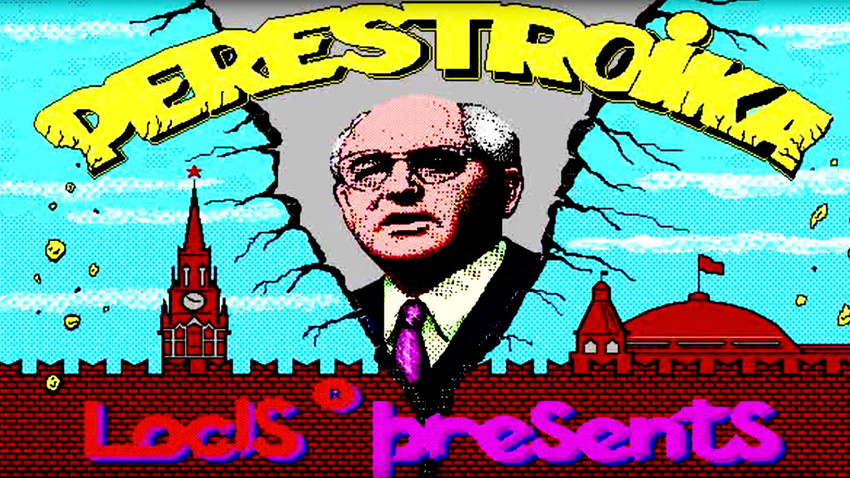Perestroika: The last Soviet computer game peddled democracy

The game enjoyed popularity both in the Soviet Union and abroad
LocisTetris wasn’t the only iconic v
Perestroika was the last game developed in the USSR. It was released in 1990 - the following year the country was no more. The game enjoyed popularity both in the Soviet Union and abroad. One can still find some versions of Perestroika for iPhones and Androids.
The game reflects the turbulent period of its creation. When the home screen loads an image of Soviet leader Mikhail Gorbachev against the crumbling Kremlin walls flashes up on the screen, the person who initiated actual Perestroika. To make it even more Russian, the folk song “Dubinushka” (“crabstick”) is the theme tune.
Frog democrats against bug bureaucrats
The main character, the user, looks like a small green frog. Yet, it’s not a frog, it’s a
The user must move the green creature towards dots which represent grocery goods (the late 1980s were a time of total deficit in the USSR) and currency transactions (under Gorbachev foreign currency made its way to Russia). These bonuses make the frog-democrat stronger. Bad dots also exist for democrats – progressive taxation that
‘Cha-cha-cha’ and ‘nyam -nyam ’
The game, though simple, became popular and was installed on millions of PCs. Perestroika was created by Nikita Skripkin, who worked for a cooperative - a new form of economic activity endorsed by the reforms of Mikhail Gorbachev. The game itself was inspired by a Japanese TV show where people threw logs into a pond in a bid to cross it.
According to Skripkin, the presence of the song and other sounds in the computer game distinguished Perestroika from other games, not only in Russia but also abroad.
“For the first time a computer started to ‘sing’ and talk with a human voice,” said the designer. Besides the rendition of “Dubinushka,” the game characters pronounce vivid sounds: “Nyam-
As Skripkin recalls, when Perestroika was ready he presented it to one of the many Soviet scientific research institutes: “Work started stalling the next day. From everywhere one could hear ‘
A friend of Skripkin told him that the game had also become extremely popular in the U.S.
Value for game industry
As the developers of Perestroika confessed, they did not make money from the game but it helped boost their reputation. The portal www.old-games.com outlines the game’s historical value and since its
On the back of Perestroika’s success in
You can read about the history of the success of another Soviet computer game, Tetris, here.
If using any of Russia Beyond's content, partly or in full, always provide an active hyperlink to the original material.
Subscribe
to our newsletter!
Get the week's best stories straight to your inbox